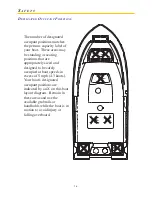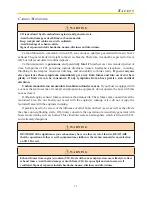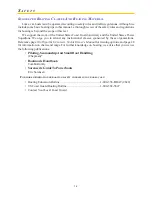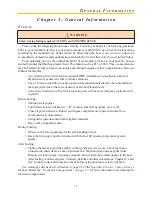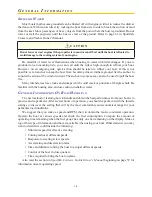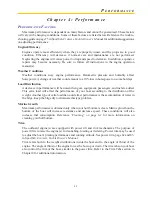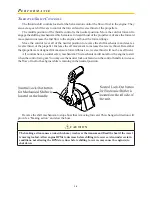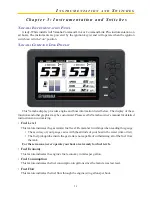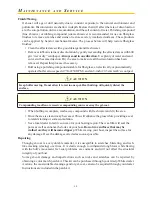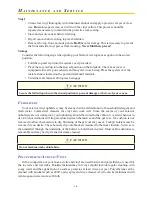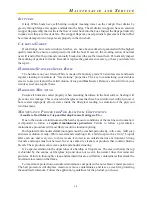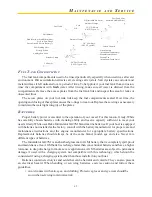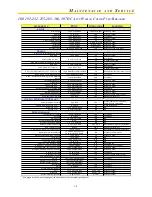
4-3
p
e r f o r m a n C e
C A U T I O N
Do not paint the outboard motors with anti-fouling paints designed for boat hulls. Many of these
paints can cause severe damage to the engines.
e
nGIne
w
arranTy
A warranty registration card is included with all engine manuals. It should be completed and
returned to the engine manufacturer as soon as possible.
s
TeerInG
Most outboard engines are equipped with an adjustable rudder trim tab. This trim tab should be
adjusted to balance the steering at the speed which you travel most frequently. Variations in speed,
boat load or engine trim will cause the steering to pull in one direction. If the boat pulls to the left,
adjust the trim tab to the left and vice-versa.
•
Mechanical Steering
Grady-White boats that use mechanical steering are equipped with No Feedback
Mechanical
Steering. No feedback steering provides easier steering and increased control
by offsetting the engine(s) torque.
The mechanical steering system is designed to require a minimum amount of maintenance.
However, you should periodically inspect the steering system (especially the control heads,
cable ends, and attachments) for wear, rust, or corrosion and lubricate the parts when
needed. If you notice a change in the “feel” of the system such as binding, looseness, noise,
or sticking, immediately have a qualified marine technician perform a thorough check.
The push rod at the end of the cable is vulnerable to corroding if it is not greased routinely.
When the boat is not in use, the motor should be turned so the push rod is not exposed to the
elements. If you operate in salt water areas, lubrication is extremely important, and you
should make frequent inspections for corrosion.
•
Hydraulic Steering
Hydraulic steering systems require regular preventative maintenance for continued safe and
reliable operation. The oil level in the helm pump must be maintained within acceptable
operating levels. A low oil level will allow air to get into the steering system and result in
unresponsive steering. The oil level should always be within 1/2 inch (1.3cm) from the base
of the fill hole, located on the front top portion of the helm pump. Check the entire steering
system regularly for oil leaks. Unobserved leaks over a period of time will result in
unresponsive steering and possibly loss of steering. Refer to the steering manual for specific
recommendations and additional maintenance requirements. Any slow or sudden change in
the “feel” of your steering system indicates an immediate need for a thorough inspection.
All repairs and replacements to steering systems should be made only by a qualified marine
technician.
•
Tilt Steering
If tilt steering is available on your model, this accessory will be in conjunction with either
mechanical steering or hydraulic steering depending on the model. This feature enables the
operator to tilt the wheel up or down. Refer to the steering system’s manual for information
on oil levels with hydraulic tilt steering.
Summary of Contents for 181 CE 2017
Page 1: ......
Page 3: ......
Page 7: ...T a b l e o f C o n t e n t s ...
Page 11: ...1 4 W e l c o m e ...
Page 25: ...3 6 G e n e r a l I n f o r m a ti o n ...
Page 33: ...5 4 I n s t r u m e n t a ti o n a n d S w itc h e s ...
Page 43: ...6 10 M a i n t e n a n c e a n d S e r v ic e ...
Page 54: ...8 7 Fisherman 180 Safety Labels and Location ...
Page 55: ...8 8 Fisherman 180 ...




